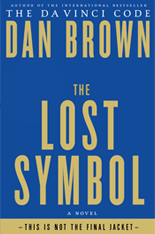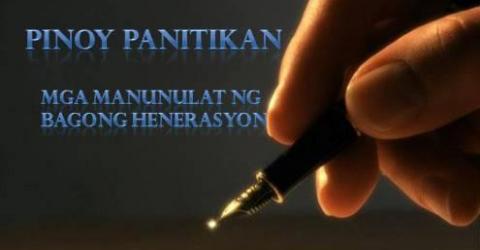To all newbie writers who are looking for publishers, Anvil Publishing will be the answer to your question. Read some guidelines for publishing taken from the official website of Anvil Publishing (http;//www.anvilpublishing.com)
FIRST, AN EVALUATION
Submit a HARD COPY of your manuscript (MS). Always keep the original copy of your work. Do not submit diskettes or other electronic files until the project has been approved.
We try our best to evaluate all kinds of work, but our publishing program mainly considers the more popular trade genres: self-help, reference, biographies, literary anthologies, cookbooks, inspirational, humor.
There are no exact criteria for a good piece of work. That’s why we ask help from in-house as well as genre experts and other readers to evaluate the publish ability of a submission. Generally, all evaluation is done at the beginning of a year, when we firm up our publishing line-up.
SO YOU’VE GOT WHAT IT TAKES
We find your book a worthwhile project. We’ll meet with you to discuss a basic BOOK PLAN: the format we think is best suitable for your book, how to design it, how we should edit and refine the text, the general work timetable to follow. After all concerns are settled, we’ll let you sign a Memorandum of Agreement (MOA) that stipulates copyright, print runs, royalties, etc.. When this is done, we start working on your manuscript.
Step-by-Step: PRE-PRESS
1. Encoding
We expect all submissions to be encoded already: that is, typewritten double-spaced using a word processing computer software. Microsoft Word is the best software for this job.
Submit to us a hard copy together with an electronic file (in portable media: floppies, ZIPs or CDs) of your MS. If we noted in the evaluation that the work has potential but still needs a little improvement, we send it to an editor/copyeditor.
2. Editing
From the editor, the MS is sent back for you to see the changes. If you’re amenable to the changes, then we go straight to the next step. Otherwise, the editor and Anvil will meet with you to discuss how we can all agree on the changes to come out with a well-oiled piece.
3. Design
The edited manuscript goes to the book designer. Sometimes, we hire separate designers for the cover and the interior. Copies of the ms are then sent to them so they can layout and present design samples. Both you and the publisher will have a say on the design of the book.
4. Proofs to CRC
When a design has been approved, it then goes to a type- setter who’ll do the first set of proofs (1/P). This set will then go to a proofreader for the 1st read. When errors are not significant, this set with the proofreader’s marks will be sent to you for your initial review. This is the best time to correct and make major changes in the MS.
The first proofs are then sent back to Anvil. Anvil inspects this set before returning it to the typesetter. The typesetter then works on the second set of proofs (2/P). When errors are minimal, the typesetter will output the second set of proofs as the final camera-ready copy (crc). This is sent back to the proofreader and/or to you for a 2nd read. If the errors are significant and need extra attention, a third set of proofs (3/P) is submitted by the typesetter. This is also the last time to correct the MS without it costing you.
Simultaneous with this is the preparation of the cover. The designer (who may be different from the one who will design the interior) will do the final art, according to your and Anvil’s recommendations. S/he will submit to Anvil a complete set of mechanicals for the cover: a color hard copy of the full cover spread together with its electronic file. These mechanicals are then sent to the color separator who will submit production-ready negatives and color progressive proofs back to Anvil.
When the crc and the cover color separation negatives are finally available, these are submitted to Anvil’s printing management assistant (pma). The PMA will review the materials, negotiate quotes with printing presses and pre-press suppliers, and prepare a costing layout to come up with a retail price of the book. When these have been done, the crc of the book is submitted to the printing press.
5. Production at the Printer’s
One of the first assignments of the printing press upon the receipt of the crc and coveR negatives is to inspect the materials and alerts Anvil if the materials are incomplete and problematic.
When all materials are okay, the printing press commences work on your book.
Step-by-Step: PRINTING, A Quick Guide
Important! Printing a regular trade book takes an average of 4 weeks to finish. Titles with color photos and more elaborate designs and specifications require much more time to produce.
1. Photography and stripping
The typeset pages and visuals are photographed to produce negatives. These negatives are then assembled as flats consisting of signatures in preparation for plate making.
2. Blueprinting
When the flats are done, they are reproduced as blueprinted pages. A blueprint is the closest thing to a finished book we get to see at this point. A blueprint of your book will be sent to you for your signature as approval to print. The signed blueprint is returned to the press and will serve as the guide for the next steps. Costs of any changes or new corrections in the blueprint will strictly be charged to the author. It is only when the approved blueprint has been turned over to the press that the book launch and/or other related promotional event can be planned.
3. Plate making to Printing
The flats are cleaned up and sent to the plate maker. These flats are reproduced onto printing plates. These plates are then clamped to a printing machine where the images on plates are reproduced onto paper.
4. Binding to Finishing
After printing, every signature that makes up a copy of the book is gathered, bound, and COVERED. Every bound and covered copy of the book is trimmed to its specified size and goes to quality control for a last cleanup and inspection.
5. Packing
After inspection, copies of the book are packed and sent to the Anvil warehouse, ready for distribution to stores.
NOT THE END OF IT
Copies of your new book will usually be introduced to the public via a book launching, press announcement or a related event. They are also placed prominently in National Bookstore branches and other outlets nationwide and overseas. As author, you are expected to help Anvil promote your book through book signing sessions, seminars or workshops, book sales, guestings on TV and radio talk shows, etc.
A FRIENDLY FINAL NOTE
Anvil takes extra care of your manuscript every step of the way. Like you, we work hard to produce a book that we hope will be referred to and talked about fondly even in the future. But working towards this goal is not always easy. There will always be factors that are hard to control like economics, time, and even the imperfection of machines and manpower.
Anvil is always open to discuss concerns and will always find ways to troubleshoot them, but always, hopefully, with your help and understanding. After all, a well-written and attractive book on the shelf is always a collaborative effort of author and publisher.
If you are interested, please visit their website. You might be the next bestselling author!
Mayo 8, 2008
Mga kategorya: Uncategorized . . May-akda: Kazandro Yuzon . Comments: 2 mga puna




